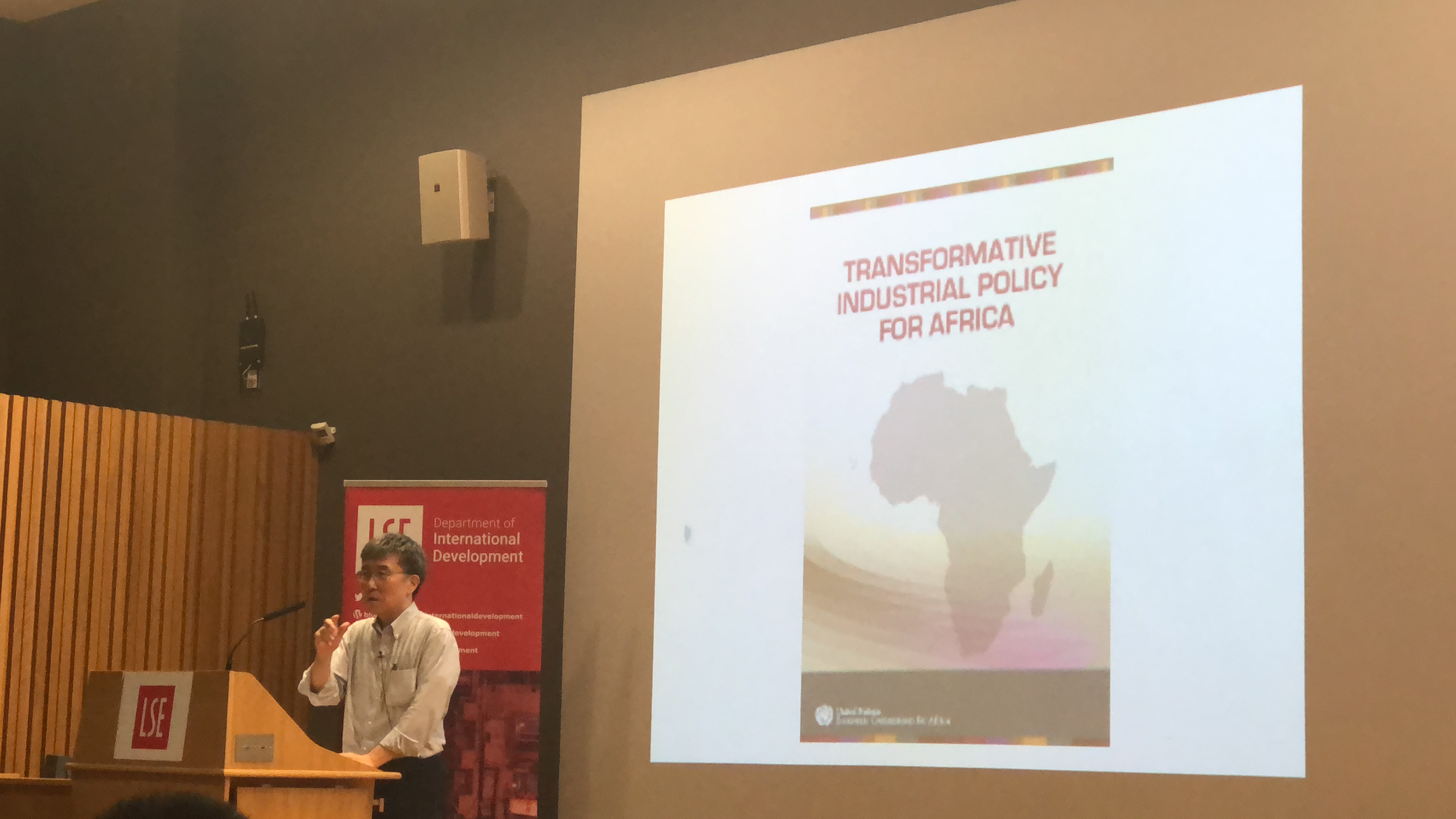Elisa Cascardi, MSc student in The Department of International Development, examines the potential to measure the impact of the Dar es Salaam Bus Rapid Transit System.
Rapid urbanization across Africa presents cities with both opportunities and challenges in transportation infrastructure; Sub-Saharan Africa sustains an annual urban growth rate at 3.5%, while Tanzania is urbanizing at a much higher rate of 5.8% annually. To cope with such drastic urbanization, Dar es Salaam has invested in a Bus Rapid Transit (BRT) system, as have other African cities. BRT systems utilize dedicated bus lanes separated from other vehicle traffic and station platforms with off-board fare collection systems to reduce slowdowns and promote traffic flow through the city (see Image 1). These systems come at a lower cost while providing the same capacity and speed of a metro or light rail. They also have high potential for increased employment and mobility, yet there is little causal evidence to prove their socioeconomic impacts. A new study in Tanzania, conducted by a collaborative team from Stanford, LSE, and the World Bank, is a pioneering project to provide rigorous evidence on the impacts the BRT system has on mobility, housing, employment, and environmental effects.

Transport evaluations have been conducted much less in comparison to other sectors such as health and education due to challenges in identifying impacts of the infrastructure. Long implementation schedules, length of time needed for effects to take place, and problems faced in devising rigorous identification strategies are common. This study is able to take advantage of the design of the Dar es Salaam BRT system to surpass many of these previous issues — routes stem from the city business district as arterial rays allowing for a spatial triple-differences evaluation approach. There are six planned phases of this BRT, the first phase has been constructed and services are running. We can consider areas around this first phase as the treatment and all other areas around planned phases as control with respect to the center point of the BRT system, shown in the red dot (see Image 2). The assumption is that, in the absence of BRT phase 1 rollout, the gradient of outcomes with respect to distance from the arterial ray would have evolved in the same way in the catchment area of the phase 1 as well as additional phase routes.

This evaluation strategy will allow the research team to provide credible information to the government of Tanzania as they move forward in planning future phases of the BRT system, as well as other governments considering constructing BRTs. This study will provide much needed information as to the effects of increased public transportation for reducing commute times, increasing employment prospects and sectoral shifts, and changes in housing prices over time. Rarely have causal links been established between public transport infrastructure and economic outcomes in developing country cities, which is increasingly imperative information for governments in rapidly urbanizing settings.
The research team is thankful to the International Growth Centre, 3ie, and The World Bank for research funding. Research is implemented through Innovations for Poverty Action (IPA) and EDI Group. Principal Investigators are Clare Balboni (London School of Economics), Dr. Gharad Bryan (London School of Economics), Dr. Melanie Morten (Stanford University) and Dr. Bilal Siddiqi (World Bank).
Elisa Cascardi is an MSc student in the department of International Development at LSE. Her research focuses on testing effective service delivery mechanisms in government, specifically in providing justice sector services in post-conflict societies. Elisa has previously worked for the World Bank conducting impact evaluations and with the Center for Effective Global Action (CEGA) at U.C. Berkeley conducting econometric research on health and energy in developing economies.
The views expressed in this post are those of the author and in no way reflect those of the International Development LSE blog or the London School of Economics and Political Science.






Dear Elisa,
I have a project idea on Road Infastructures’ influence on health behaviour and physical activity in LIC.
Please let me know if we can work together.
Best,